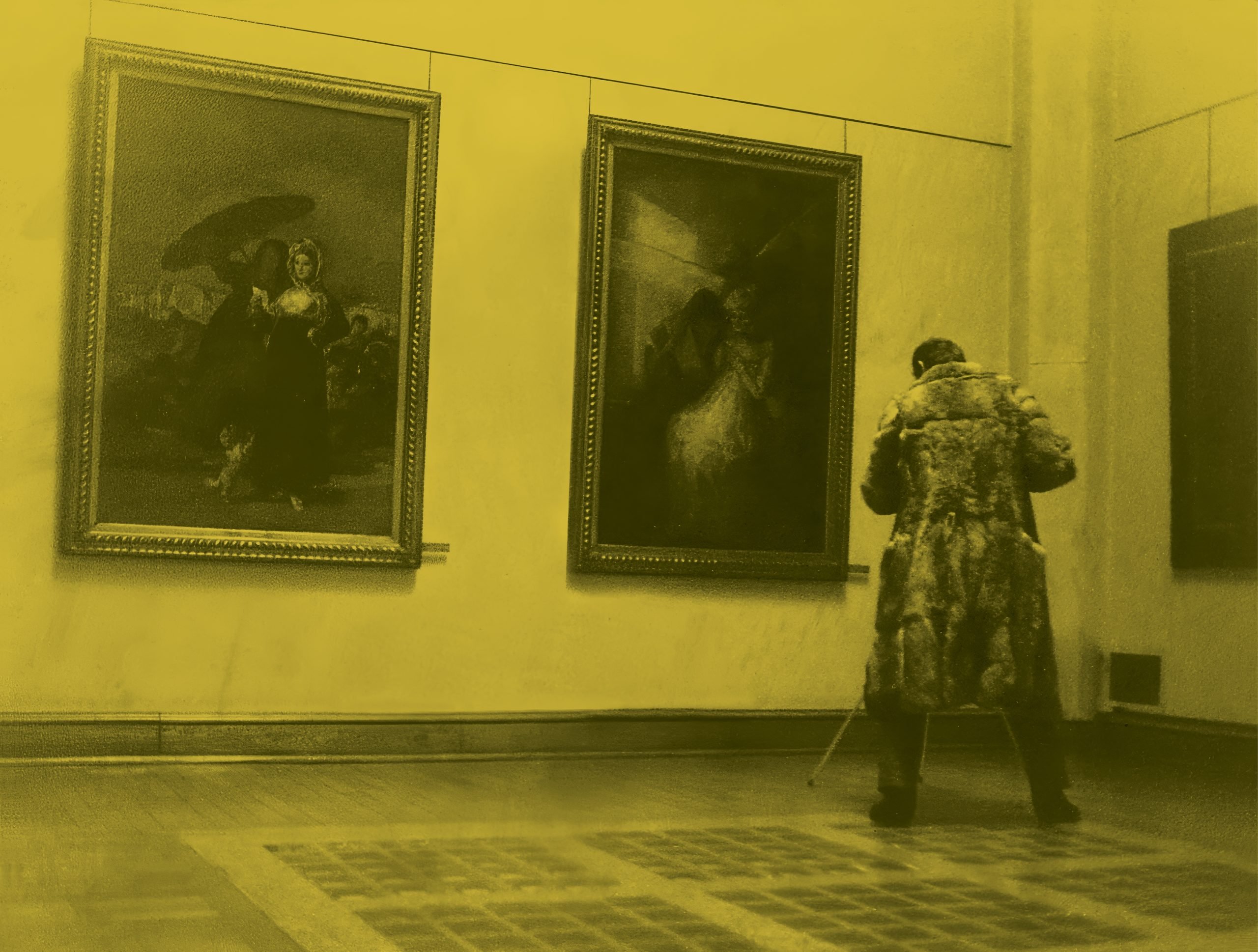
Madrid’s Museo del Prado is hosting the debut solo show for German painter and photographer Sigmar Polke in the Spanish capital, 14 years after the artist’s death from cancer. “Affinities Revealed” takes as its theme the major inspiration Polke drew from Spanish painter Francisco de Goya, over 1,200 of whose works reside at the museum.
Image of the exhibition galleries “Sigmar Polke. Affinities Revealed. Photo © Museo Nacional del Prado.
The exhibition consists of more than 40 of Polke’s works as well as Goya’s 1810-12 masterpiece Old Women (also known as Time). Old Women is held in the collection of the Palais des Beaux Arts de Lille; it is being exhibited in Spain for the first time. Polke encountered the painting in 1982, and its impact on his practice, which forms the show’s conceptual basis, was profound.
Exhibited next to Old Women is an X-radiograph of the oil painting that illuminates the development of its composition. It was this image which particularly attracted Polke and “encouraged him to experiment with new directions… offer[ing] him a new source of inspiration to delve deeper into his own artistic concerns,” according to press materials.
The X-radiograph also revealed an abandoned Goya composition depicting the resurrection of Christ and featuring clouds and departed souls. This hidden image inspired other works by Polke that appear in the exhibition, neatly encapsulating the artist’s interest in the magical and the paranormal. Even minor details in The Old Women, including the decrepit sitters’ jewelry and wigs, inspired the German artist, who made direct reference to them.
Image of the exhibition galleries “Sigmar Polke. Affinities Revealed.” Photo © Museo Nacional del Prado.
The Old Women was likely part of a series of paintings along with Maja and Celestina on a Balcony (1808–14) and Majas on a Balcony (1808–14), created without commission from a specific patron. In the painting, two women wearing lavish outfits look in a handheld mirror, with a winged figure representing Father Time behind them holding a broom aloft as if to sweep them both away. On the reverse of the mirror appears the text “Que tal?” (“How goes it?”), and one woman wears jewelry similar to the Spanish Queen Maria Luisa, who was famed for her vanity.
Polke photographed various fragments from The Old Women, which he then enlarged and altered with hand-drawn illustration.
Image of the exhibition galleries “SIgmar Polke. Affinities Revealed.” Photo © Museo Nacional del Prado.
The exhibition’s website explains that the show, curated by the Spanish art historian Gloria Moure, aims to establish a dialogue between “Polke’s formal experimentation and the symbolic charge of Goya’s work.” The exhibition’s press materials note that Goya’s impact on Polke was threefold: he was fascinated with the main himself, the iconography of his work, and the specific facture of The Old Women.
Polke has regularly made headlines since his 2010 passing, including when a man paid $90 at a thrift store for a work he believed to be a signature painting; his photographic work’s rare appearance at Paris Photo; and, perhaps most notably, for a court case involving his estate, which was forced to return a painting it claimed to have been stolen.